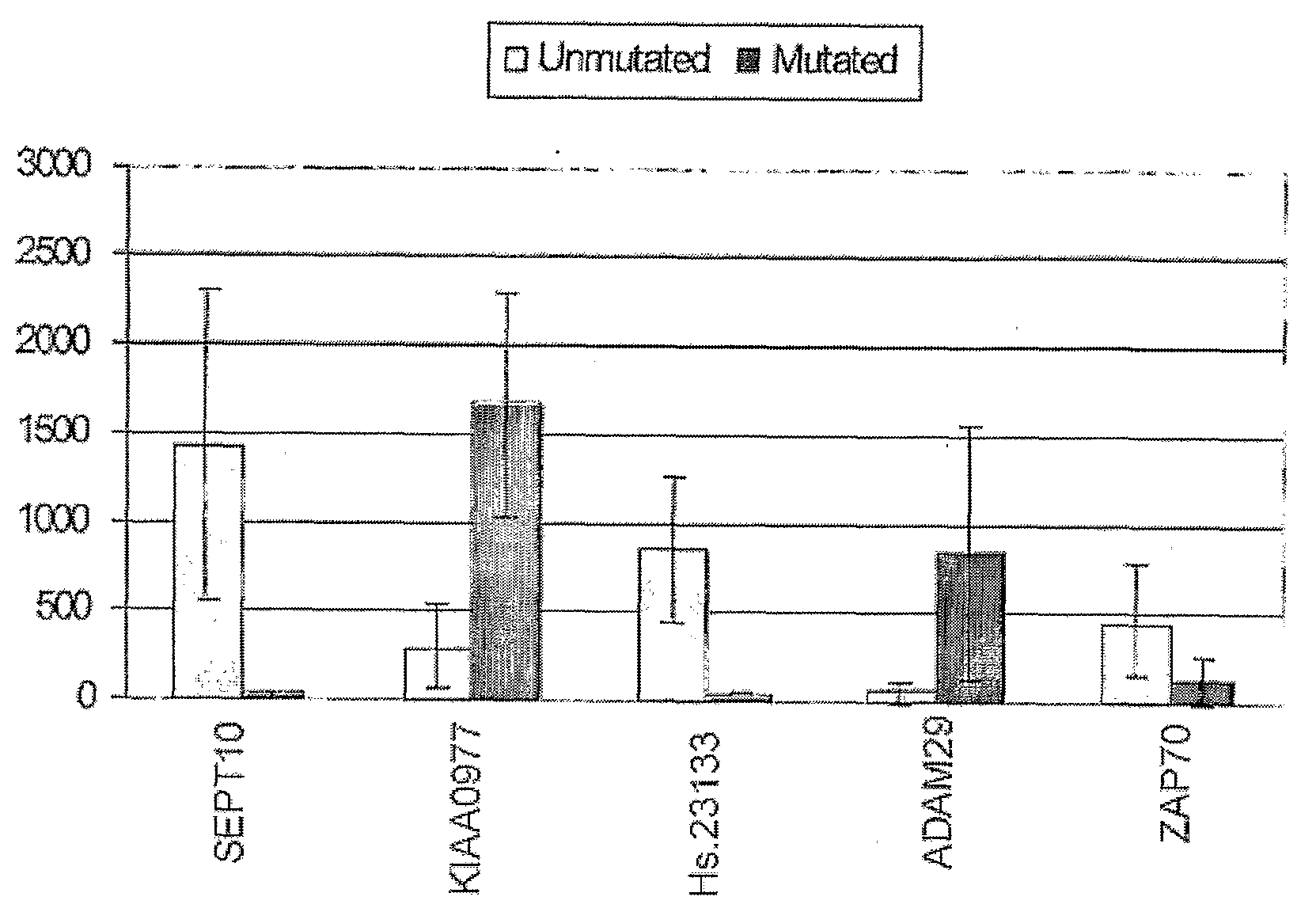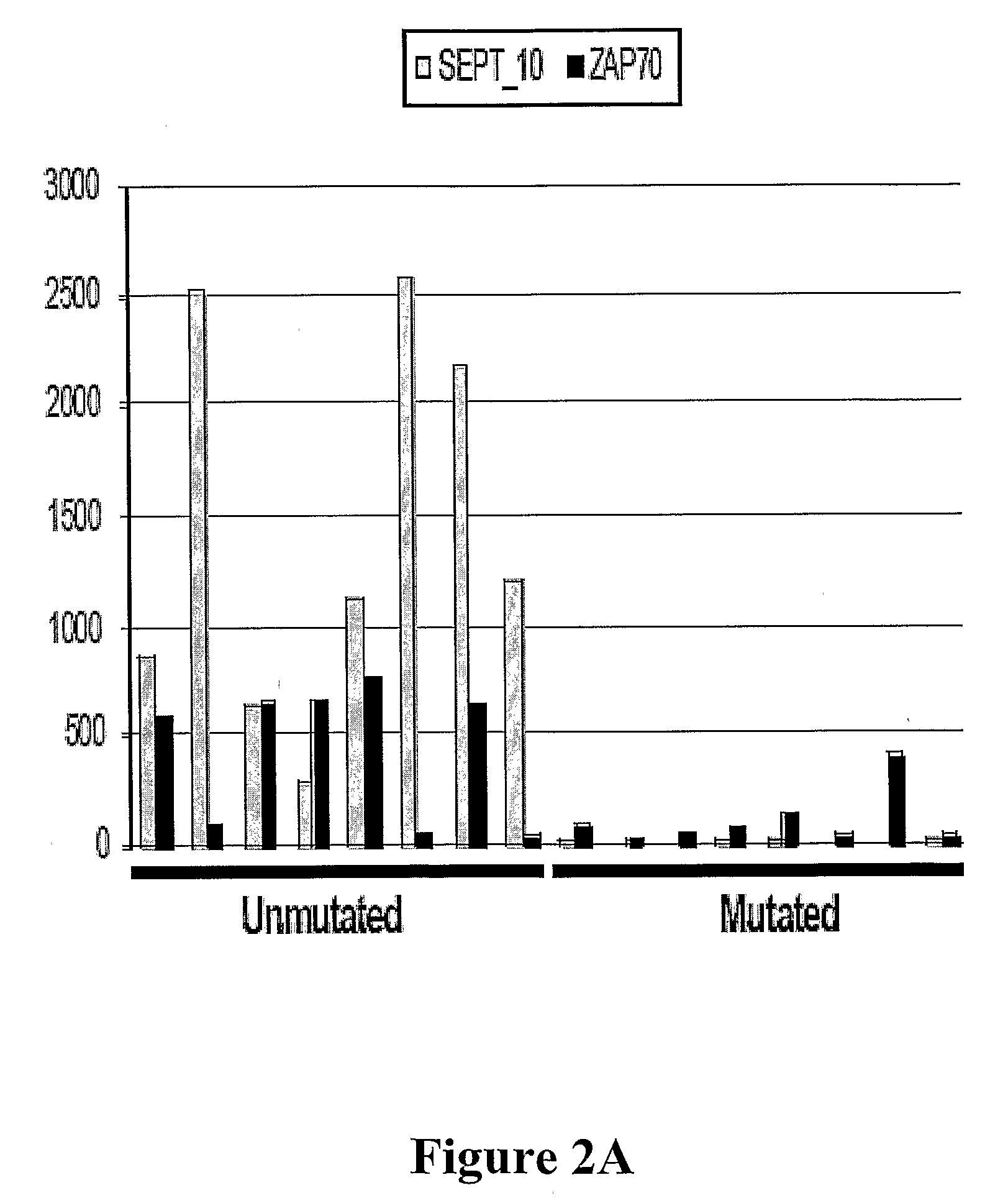Compositions and Methods for Differential Diagnosis of Chronic Lymphocytic Leukemia
a lymphocytic leukemia and differential diagnosis technology, applied in the field of compositions and methods for differential diagnosis of chronic lymphocytic leukemia, can solve the problems of recurring hospitalization, poor performance status, and difficulty in conventional karyotypic analysis of leukemic cells
- Summary
- Abstract
- Description
- Claims
- Application Information
AI Technical Summary
Benefits of technology
Problems solved by technology
Method used
Image
Examples
Embodiment Construction
[0037]The invention relates to methods for determining a prognosis for B cell chronic lymphocytic leukemia (CLL) in a human subject. Also encompassed by the invention are protocols and diagnostic compositions designed for the determination of a prognosis of B-cell CLL. The present invention is based, in part, on the discovery that four marker genes, namely SEPT10, KIAA0977, Hs.23133 and ADAM29, are of particular utility in predicting the course of CLL in a patient, thereby providing useful information to the clinician in selecting the optimal modality of treatment, and to the patient in preparation for a change in his / her condition. This is especially valuable when CLL patients are being diagnosed at an increasingly early age, and more options in treatment modalities are becoming available.
[0038]A number of genes had been studied by hybridization assays for a possible association of their expression with the progression of CLL and IgV mutation status, but many such candidate genes a...
PUM
| Property | Measurement | Unit |
|---|---|---|
| disorder | aaaaa | aaaaa |
| interphase fluorescence in situ hybridization | aaaaa | aaaaa |
| frequencies | aaaaa | aaaaa |
Abstract
Description
Claims
Application Information
 Login to View More
Login to View More - R&D
- Intellectual Property
- Life Sciences
- Materials
- Tech Scout
- Unparalleled Data Quality
- Higher Quality Content
- 60% Fewer Hallucinations
Browse by: Latest US Patents, China's latest patents, Technical Efficacy Thesaurus, Application Domain, Technology Topic, Popular Technical Reports.
© 2025 PatSnap. All rights reserved.Legal|Privacy policy|Modern Slavery Act Transparency Statement|Sitemap|About US| Contact US: help@patsnap.com



